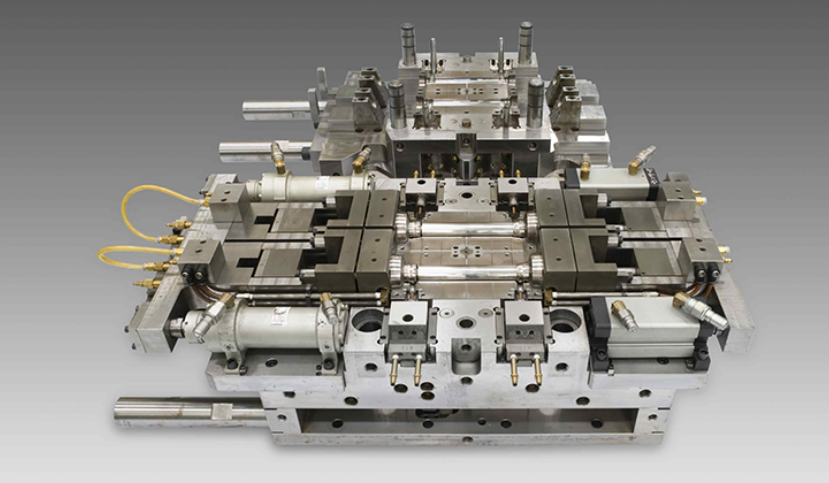Exploring the Advancements in Automotive Mold Technology
Introduction
The automotive industry has experienced significant technological advancements over the years. One crucial aspect of this progress is the development of automotive mold technology. Mold technology plays a vital role in the manufacturing process of vehicles, enabling the production of complex shapes and structures. In this article, we will explore the advancements in automotive mold technology and their impact on the industry.

1. Introduction of 3D Printing
One of the major advancements in automotive mold technology is the introduction of 3D printing. Also known as additive manufacturing, 3D printing allows the creation of three-dimensional objects by depositing layer upon layer of materials such as plastics, metals, or composites. This technology has revolutionized the automotive industry by providing a faster and more cost-effective way to produce molds. 3D printing enables the creation of complex molds with intricate designs that were previously difficult or impossible to manufacture using traditional methods.
2. Enhanced Precision and Accuracy
Automotive mold technology has also witnessed advancements in terms of precision and accuracy. Computer Numerical Control (CNC) machining has become more sophisticated, allowing for tighter tolerances and better surface finishes. CNC machines are now equipped with high-precision tools and advanced software that enables the creation of molds with intricate details and complex geometries. This level of precision ensures that the final product meets the exact specifications required by automotive manufacturers.
3. Rapid Prototyping
Another significant advancement in automotive mold technology is the introduction of rapid prototyping techniques. Rapid prototyping allows for the quick and cost-effective production of prototypes using computer-aided design (CAD) data. This technology has shortened the development cycle of new automotive models, as engineers can now quickly create and test molds before moving on to mass production. Rapid prototyping has also facilitated iterative design processes, enabling manufacturers to refine their designs based on real-world testing and feedback.
4. Lightweight and High-Strength Materials
The advancements in automotive mold technology have also led to the use of lightweight and high-strength materials in mold production. Lightweight materials such as carbon fiber composites offer excellent strength-to-weight ratios, allowing for the production of molds that are both strong and lightweight. This has a direct impact on the weight and fuel efficiency of the final product. Additionally, the use of high-strength materials improves the durability and longevity of the molds, resulting in reduced maintenance and replacement costs.
5. Automation and Robotics
Automation and robotics have revolutionized the automotive industry, and mold technology is no exception. Automated systems are now widely utilized in mold production, leading to increased efficiency, reduced errors, and improved productivity. Robots can perform repetitive tasks with high precision, ensuring consistent quality in the molds produced. Automated systems also enable faster production cycles, as they can operate 24/7 without the need for breaks or rest. The integration of automation and robotics in automotive mold technology has significantly streamlined the manufacturing process.

Zaključak
The advancements in automotive mold technology have had a profound impact on the industry, enabling the production of complex shapes and structures with higher precision and accuracy. The introduction of 3D printing, enhanced precision and accuracy through CNC machining, rapid prototyping techniques, the use of lightweight and high-strength materials, as well as the integration of automation and robotics have all contributed to the evolution of automotive mold technology. These advancements have not only improved the manufacturing process but have also resulted in lighter, more fuel-efficient vehicles. As the automotive industry continues to evolve, it is certain that automotive mold technology will continue to play a crucial role in shaping the future of vehicle manufacturing.
Prethodno:China Performing Mold: Unleashing the Artistry of Mold Making
Sljedeći: Introduction to Insert Mold: A Revolutionary Technique in English
-
Creating High-Quality Plastic Chair Moulds for Durable and Stylish Seating Solutions
2023-7-9
Introduction: Plastic chairs have become an integral part of modern furniture, providing comfortable and stylish seating...
Detaljnije -
Aerospace Mold: Cutting-Edge Technology for Precision Manufacturing
2023-7-11
In the fast-paced world of aerospace manufacturing, precision and efficiency are critical. To meet the demands of this i...
Detaljnije -
Creating High-Quality Plastic Chair Molds: A Comprehensive Guide
2023-9-12
Introduction Plastic chairs have become increasingly popular due to their affordability, durability, and versatility. To...
Detaljnije -
Industrial Mold: The Key to Efficient and Cost-effective Manufacturing
2023-5-17
Industrial mold is an essential component in the manufacturing industry. It is responsible for creating the shape, size,...
Detaljnije -
Producing Electronic Components through Molding Techniques
2023-6-4
The manufacturing of electronic components has come a long way since their inception. From simple vacuum tubes to comple...
Detaljnije -
Plastic Molds: Essential Tools in Industrial Manufacturing
2024-10-19
Plastic molds play an important role as key equipment in the production of plastic products. The following is a detailed...
Detaljnije







